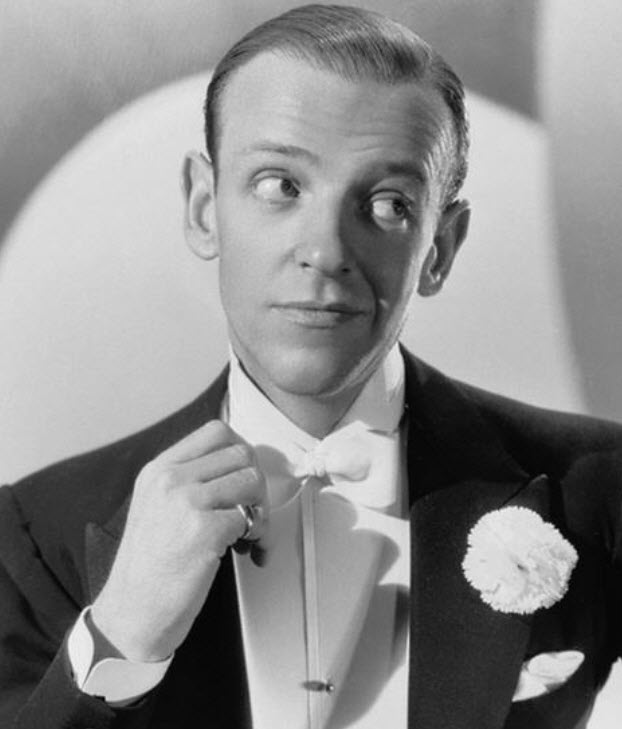Contents
 Fred Astaire, born Frederick Austerlitz on May 10, 1899, in Omaha, Nebraska, and passing away on June 22, 1987, in Los Angeles, California, was an American dancer, singer, actor, choreographer, and television presenter. He is widely regarded as one of the most influential dancers in the history of film and television musicals. His stage and subsequent film and television careers spanned a total of 76 years, during which he made 31 musical films. He is best known for his graceful, sophisticated dance style and for his legendary partnership with Ginger Rogers, with whom he starred in 10 Hollywood musicals.
Fred Astaire, born Frederick Austerlitz on May 10, 1899, in Omaha, Nebraska, and passing away on June 22, 1987, in Los Angeles, California, was an American dancer, singer, actor, choreographer, and television presenter. He is widely regarded as one of the most influential dancers in the history of film and television musicals. His stage and subsequent film and television careers spanned a total of 76 years, during which he made 31 musical films. He is best known for his graceful, sophisticated dance style and for his legendary partnership with Ginger Rogers, with whom he starred in 10 Hollywood musicals.
Early Life and Career
Astaire started dancing at a young age, performing on stage in vaudeville with his sister Adele. The siblings enjoyed a successful career, becoming a popular act on Broadway and in London. However, when Adele retired from show business in 1932 to marry, Astaire faced the challenge of redefining his career as a solo performer.
Hollywood Stardom
Astaire’s transition to Hollywood was initially met with scepticism from industry insiders. However, he quickly silenced doubters with his performance in “Dancing Lady” (1933) and his first major film, “Flying Down to Rio” (1933), where he was paired with Ginger Rogers. The duo’s on-screen chemistry and innovative dance routines captivated audiences and led to a series of successful films, including “Top Hat” (1935), “Swing Time” (1936), and “The Gay Divorcee” (1934).
Beyond his work with Rogers, Astaire sought to showcase his talents with other partners and in solo performances. He starred in memorable films with a range of leading ladies, including Eleanor Powell, Rita Hayworth, Cyd Charisse, and Judy Garland. Some of his notable films outside of the Rogers partnership include “Easter Parade” (1948), “The Band Wagon” (1953), and “Funny Face” (1957).
Legacy and Style
Astaire’s influence on dance in film cannot be overstated. He was known for his impeccable technique, innovative choreography, and the ability to make complex dance routines appear effortless. He was a perfectionist, often rehearsing for hours to ensure every step and movement was executed precisely. His style was elegant and debonair, often incorporating tap, ballet, and ballroom dance elements into his routines.
Astaire’s contributions to the arts were recognized with numerous awards, including an honorary Academy Award in 1950 for his unique artistry and contributions to the technique of musical pictures. Despite his passing, his work continues to inspire dancers and entertain audiences worldwide.
Personal Life
While often kept private, Fred Astaire’s personal life was marked by the same elegance and grace that characterized his public persona. Despite his immense fame, Astaire was known for his humility and dedication to his craft, qualities that extended beyond his professional achievements into his personal relationships and hobbies.
Family and Marriages
Astaire’s first marriage to Phyllis Livingston Potter in 1933 was a significant chapter in his life, providing him with a stable family life away from the Hollywood spotlight. Phyllis, a Boston socialite, and Astaire shared a deep bond, and their marriage lasted until her death from lung cancer in 1954. The couple had two children, Fred Jr. and Ava Astaire McKenzie, and also adopted a son, Peter, after Phyllis’s sister’s death.
Following Phyllis’s death, Astaire was devastated. He had once famously said, “I have no desire to prove anything by dancing. … I just dance. I just put my feet in the air and move them around.” This sentiment reflected not just his approach to dance but also his approach to life—finding joy and purpose in the moment, a philosophy that was tested during this difficult period.
Astaire found love again with Robyn Smith, a jockey 45 years his junior, whom he married in 1980. The marriage surprised many due to their age difference, but those who knew Astaire well understood that his youthful spirit and passion for life made this pairing fitting. Smith and Astaire shared a love for horse racing, a hobby that Astaire had enjoyed for many years, and their marriage lasted until he died in 1987.
Hobbies and Interests
Astaire’s interests outside of dancing included playing the piano, singing, and composing music. He was also an avid golfer and horse racing enthusiast, owning several successful racehorses. His involvement in horse racing provided a diversion from the demands of his career and a connection to his second wife, Robyn, who was an accomplished jockey.
